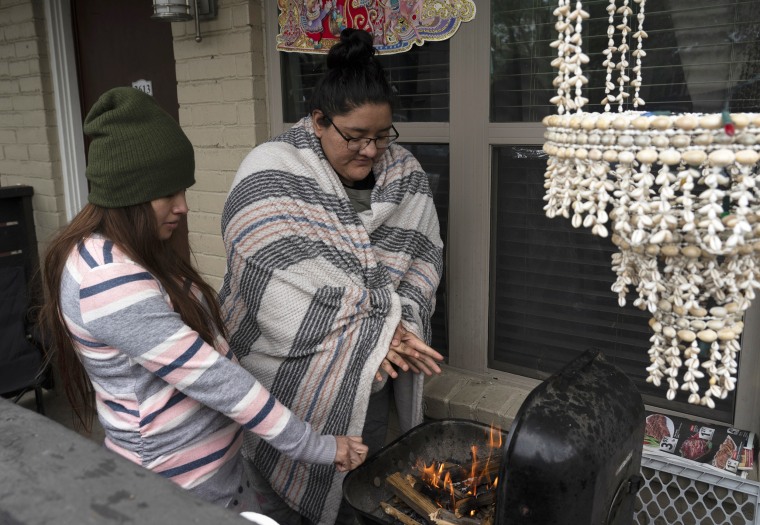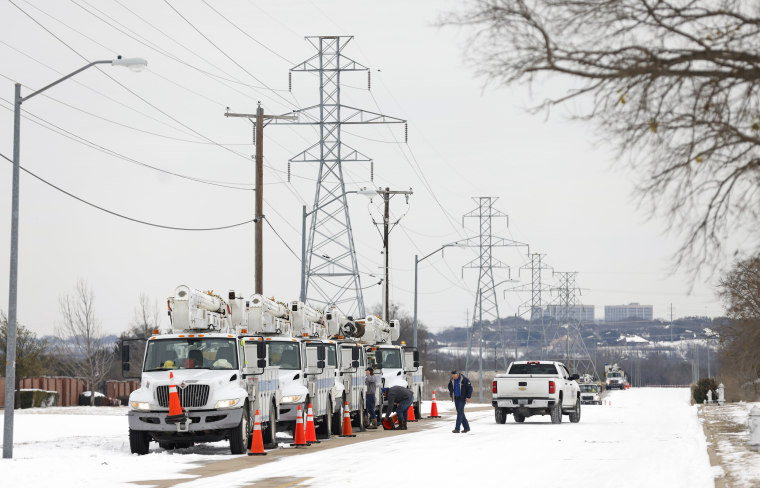The Electric Reliability Council of Texas hasn’t lived up to its billing.
Even though warning signs go back a decade, America’s only independent electrical service wasn’t prepared for the Arctic-cold winter storm that leveled the Lone Star State this week.
Homeowners throughout Texas simultaneously cranked up the heat to stay warm, creating demand for energy that exceeded the electric grid’s supply and resulting in millions of blackouts.
Texans were subject to record-low temperatures, left to bundle themselves in blankets and burn wood to knock off the extreme chill, and boil water, and in some cases snow, to hydrate.
By Friday morning, 200,000 people were still without lights and electricity and millions didn’t have adequate drinking water.
At least 37 people have died because of widespread weather-related fatalities, the majority in Texas.
Borrowing electricity from other states would have expedited an end to the energy crisis.
Now comes the central point — Texas has always wanted to stand alone.

The electric grid system is divided into three parts in the continental United States: Western Interconnection, Eastern Interconnection and ERCOT.
The ones that cover the western and eastern U.S. connect local grids in those states, allowing them to operate independently and also exchange power with one another.
ERCOT powers only 90 percent of Texas, a state with 29 million residents.
“The independence of the grid is good and bad. It gives us the freedom to make decisions based on how we want to do it,” said Michael Webber, an energy professor at the University of Texas at Austin. “But it’s also bad when things get rough and we can’t lean on our neighbors for help. And that’s what we’re suffering right now.”
Texas found its way to electric and power independence in the late 1800s when utilities formed mainly to generate electricity to power compressors for ice plates, according to a promotional video on ERCOT's website that documents its history.
"They just kind of started selling excess electricity from the ice-making process to businesses and people around ice-making plants," Kent Saathoff, former vice president of grid operations and systems planning, said in the ERCOT video, adding that electric utilities gradually started to grow.

The idea for energy independence started in World War II because there was a need for more power along the Gulf Coast, according to the ERCOT video.
From there, separate utilities statewide came together and increased their interconnection so that excess generation in Central and North Texas could be brought down to the Gulf Coast.
Also helping the cause was passage of the Federal Power Act to regulate the interstate activities of electrical power in 1935.
The law gave the federal government authority to regulate power companies engaging in interstate commerce. In response, several Texas utilities vowed to never allow power outside of the state, thus avoiding federal regulation.
"The utilities in Texas were smart, and they got together and they made an agreement,” Donna L. Nelson, then chairman of the Public Utility Commission of Texas, said in the ERCOT video.
That decision decades ago has left Texas alone to deal with its current energy crisis, since it can't borrow energy with the Regional Transmission Organizations from which 48 states get their electricity.
In Texas, the extreme weather has disrupted water service for more than 12 million residents, forcing many of the more than 680 water systems statewide to issue boil water notices.
“If most Texas don’t know anything about ERCOT, that’s really good because it means people are doing their job seamlessly,” Nelson said in the ERCOT video long before the crisis.
That hasn’t turned out to be the case.
As the independent system operator, Texas' power grid is a network of nearly 46,500 miles of transmission lines that carry electricity to utility companies for distribution.
The grid can generate 82,000 megawatts of electricity, which gets delivered to more than 26 million consumers.
Federal regulators warned ERCOT a decade ago that its power grid was vulnerable following a 2011 blackout caused by similar extreme cold conditions, although it was not required to act on the recommendations.
ERCOT, a nonprofit organization subject to oversight by the Public Utility Commission of Texas and the Texas Legislature, was founded five years after a major power outage left millions of people in the dark for hours in the northeast in 1965.
The outage prompted a national policy change leading to the formation of reliability councils across the country to improve operating and planning practices, according to the video on ERCOT's website.
In Texas, ERCOT became the country’s first independent electric system operator.
The organization has since invested in renewable energy and other innovations, its supporters said in the documentary.
But its primary duty remains the one it failed at this month.
"The most important job ERCOT does is match supply of electricity and demand at every moment in time to make sure the stability of the grid is not affected and everyone's lights stay on," Nelson said in the documentary.
The White House this week said the Federal Emergency Management Agency has supplied generators to Texas and is preparing to move diesel into the state to ensure the availability of backup power to key critical infrastructure, including hospitals, NBC News reported.
Moving ahead, Webber said some solutions for Texas are to invest in energy supply and interconnections with other states.
“But they’re not going to happen by themselves and we shouldn’t pretend it’s not a possibility,” said Webber, whose Austin residence was without power during the blackout.
He said he foresees another power failure if nothing is done.
“Absolutely (this) will happen again in the future," Webber said. "It has happened before, and it will happen again."
